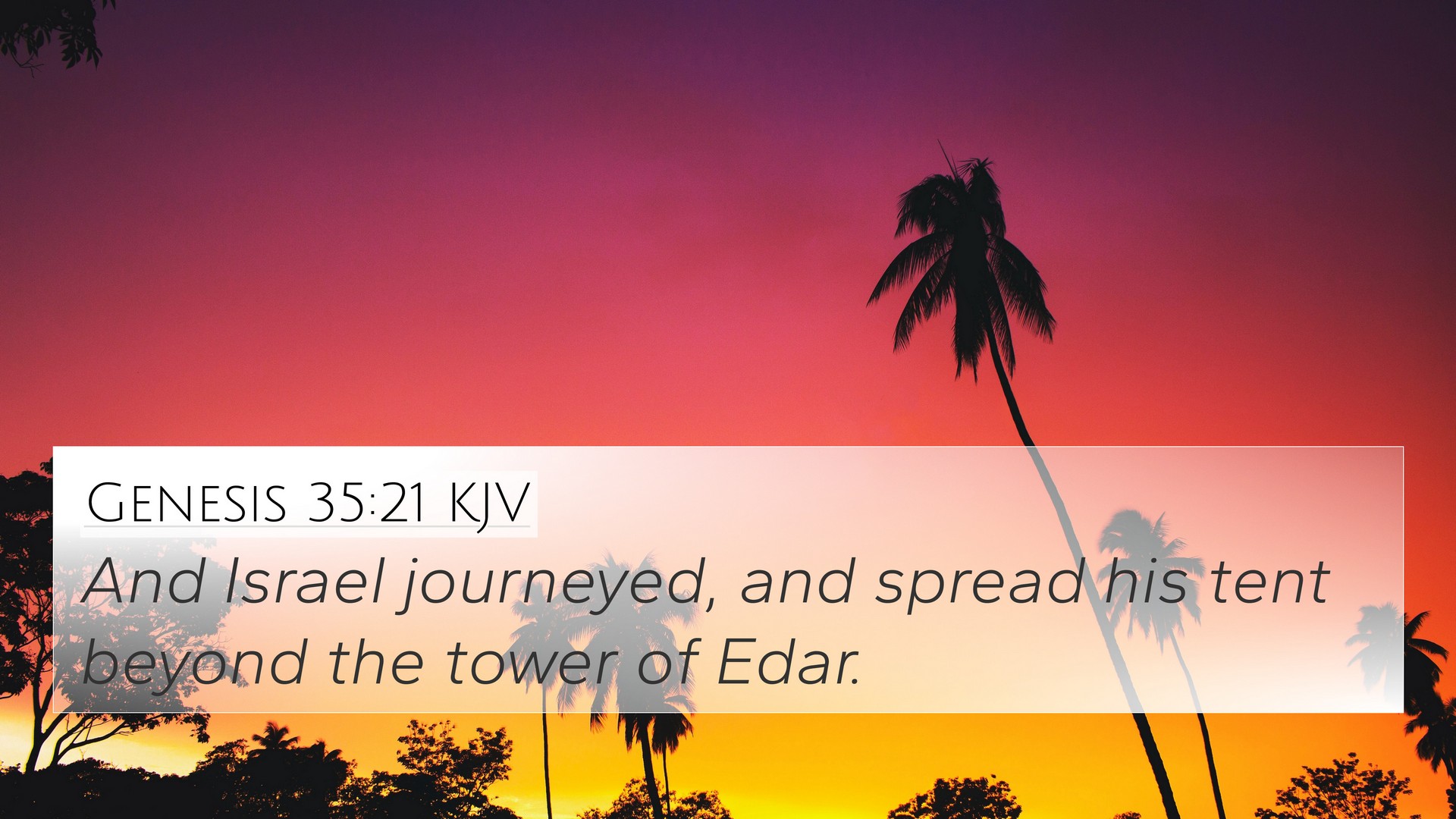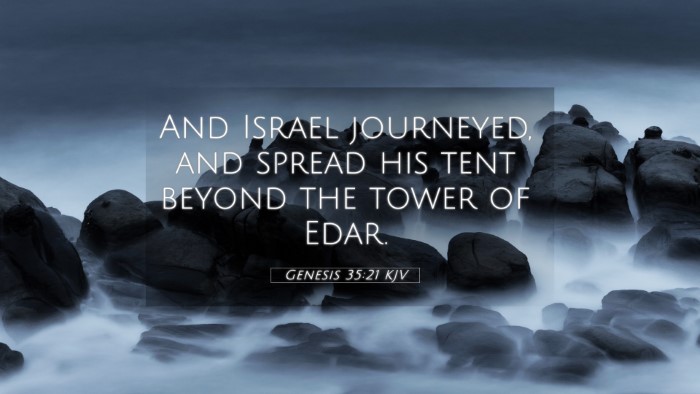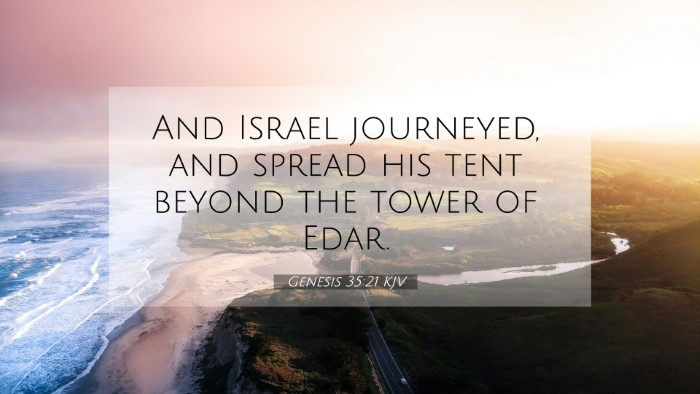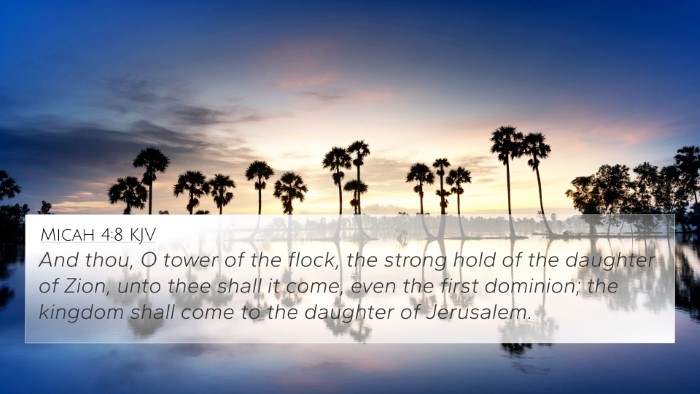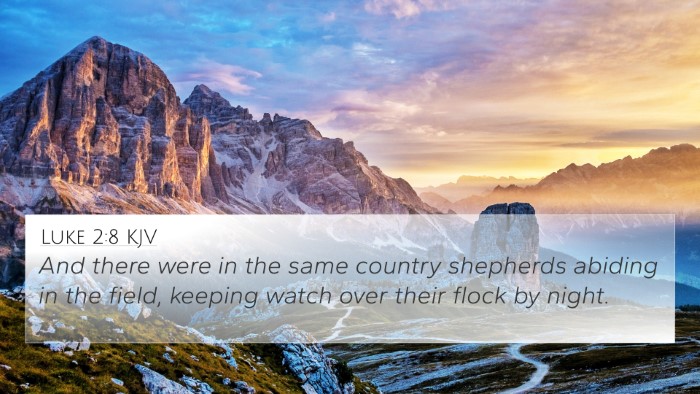Understanding Genesis 35:21
Genesis 35:21 states, "And Israel journeyed, and spread his tent beyond the tower of Edar." This verse describes a significant moment in the life of Jacob, who is also known as Israel. He continues his journey and sets up his tent near a location called the tower of Edar. This journey holds deeper spiritual implications and connections within the biblical narrative.
Contextual Analysis
This passage occurs after Jacob has experienced substantial personal transformation, including the renaming of his son Benjamin and the reaffirmation of God's covenant. His journey to the tower of Edar symbolizes both physical movement and spiritual significance. According to Matthew Henry, this also represents a return to a more central aspect of worship and life in the Promised Land.
Key Themes
- The Journey of Israel: This verse is part of a larger narrative highlighting the journey of Jacob as he engages in God's plan.
- God's Guidance: Jacob's movements are often interpreted as guided by divine intervention, indicating God's ongoing relationship with His people.
- Settlement and Worship: The act of spreading his tent suggests stability, a place to worship, and a continued fulfillment of God's promises.
Significance of the Tower of Edar
The “tower of Edar” holds specific importance. Adam Clarke notes that this tower might not only represent a geographical feature but also a prophetic significance seen later in Scripture, where reference to the shepherding role of Jesus aligns with its imagery.
Biblical Cross-References
Genesis 35:21 can be connected with several other biblical passages that enhance understanding:
- Genesis 28:19 - The name "Bethel" connects with Jacob's earlier experiences, establishing a significant location for worship.
- Genesis 32:28 - Jacob's name change emphasizes the deep transformation and identity tied to his journey.
- 1 Samuel 10:2 - This passage also mentions a tower, hinting at God’s providence and strategic locations in Israel's history.
- Micah 4:8 - References to the tower of Edar connect with the future prophetic significance regarding the Messiah's birth.
- Isaiah 40:11 - The shepherding imagery connects to the themes present during Jacob’s tent spread, illustrating God's care for His people.
- Luke 2:8-14 - The shepherds in the fields near Bethlehem signify the fulfillment of God's promise, linking back to Jacob's shepherd-like imagery.
- Hebrews 11:9-10 - Reflects on Abraham and Jacob's faith, highlighting their journeys as steps towards the ultimate promise of God.
Thematic Connections
This verse resonates with various themes throughout the Bible, offering readers a deeper understanding of God's presence in the journey of faith. Albert Barnes emphasizes that the act of journeying signifies the believer's continual spiritual journey toward the ultimate promise of God. Moreover, the journeying motif throughout Scripture highlights the aspect of faith being a pilgrimage.
Exploring Inter-Biblical Dialogue
Genesis 35:21 provokes questions of how journeys serve as metaphors for Christian life and faith today. The movement and worship near the tower of Edar lead to reflections on spiritual pilgrimage and divine providence, drawing connections across both Old and New Testament narratives.
Practical Applications
For modern believers, dissecting Genesis 35:21 through a cross-referenced study enriches their understanding of scripture. Tools for Bible cross-referencing help in identifying similar themes, enhancing one's grasp of biblical narratives. For example, exploring the connections between God's promise to Abraham and its reaffirmation to Jacob illustrates the continuity and faithfulness of God's covenants through generations.
Conclusion
The verse Genesis 35:21 encapsulates a pivotal moment in Jacob's life while echoing deeper theological themes of God's promises and the journey of faith. Cross-referencing this verse with related scripture enhances comprehension and reveals the interconnectivity found throughout the Bible.
